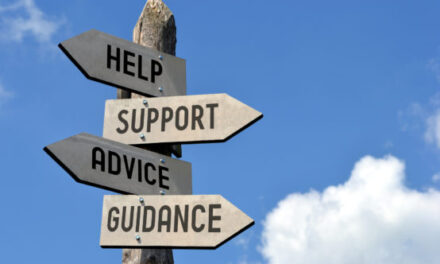Q: We’ve been here before, many times. We’ve had, what, 27 school shootings in 2022 alone? Not to mention the hate-based tragedies in Buffalo and Laguna Woods…And now, here we are again. I know I’ve got to address the shooting at Robb Elementary School with my own elementary school students, just as I did the other times this has happened. But this time feels different. My students are not OK to begin with. Are any of us? I’m also done telling them that we — the adults who care about them — are doing everything to keep them safe. Because we’re not. Until we have better gun control, we’re just lying to their faces. I’m not sure if it’s the sheer magnitude of the tragedy at Robb, or the Groundhog Day aspect of yet another shooting, or the fatigue that comes with being an educator in May, or the cynicism I feel about the possibility of change, or the chronic stress of living and teaching through a pandemic, or trying to process this while hearing about devastation in Ukraine and monkeypox and endless other horrible things. I’m numb with grief, but I’m sure I’ll have spoken to my students by the time you answer this anyway. Still, I’m wondering if you would talk about this shooting with students any differently than the others, given that we’re all emotionally and physically depleted, and given where we are culturally and societally. If so, what should I have said, and what should I say and do next time, when this inevitably happens again?
A: As a school counselor in a K-8 school, I can relate. I wrestle with some of these same questions. And you’re right. This isn’t some rare, isolated incident, and it’s hard in the wake of so many tragedies to shed cynicism and retain optimism that things can and will change. It’s also hard to comfort students when you’re numb with grief yourself. So, my first piece of advice is to process your own emotions with a friend, colleague, therapist, partner or religious figure before you engage in a dialogue with students. You want to be a calm presence, even if you have to “fake it ’til you make it.” That doesn’t mean you’re inauthentic, but it does mean you recognize that they all have different temperaments and needs.
Beyond addressing your own emotional needs, let your students know that you recognize they’re navigating a hard and uneasy time in history and their reserves may be down. As a result, some of your students might be needier than usual. Others might uncharacteristically lash out in anger, while still others will crave normalcy and prefer to avoid the topic entirely. Here are some more ways you can help your students (and yourself).
- Be aware that your students are taking their cues from you. You might need to process your emotions with a friend or partner so you can be a non-anxious and reassuring presence for them.
- Consider the age of your students. Both the American Psychiatric Association and the American Academy of Pediatrics recommend avoiding the topic until kids are about age eight, though it will depend on the child. Also, you may need to talk about it if they’ve heard what happened from classmates or from overhearing the news. For students under age six, keep your explanation as simple and short as possible. You might respond by saying, “Yes, something very sad happened in a school that’s far from here, but schools are safe places, and all of your teachers are working hard to make sure that you’re safe, learning and having fun.”
- Ask your students what they know and how they’re feeling. Listen to them and answer their questions, but be sure to answer the questions they ask rather than the ones you think they’re asking. If you’re not sure what they’d like to know, ask them to expand on what they mean. Less information often is more. If you don’t know the answer, tell them that. You don’t have to have all the answers.
- Let them know it’s normal to have strong feelings and they can talk to you about those feelings whenever they’d like. Help them identify other trusted adults at school they can turn to if they need help during the school day.
- If a student can’t stop focusing on worst-case scenarios and catastrophizing, help them pull their thoughts “back to the center” and assess what they need. This might be information about safety procedures at school, uplifting stories about people who acted heroically, or reassurance that all of the adults in their lives are doing everything they can to keep them safe.
- Encourage parents in the community to limit news exposure. Children take everything in, and children under age 11 can’t handle seeing violent imagery. They may see the exact same clip five times, for instance, yet think something happened multiple times.
- Keep to the normal routine. Stick to the normal routine to the extent possible, but recognize some students may need more breaks than usual.
- Empower your students. Particularly if you teach older elementary school students, empower them by suggesting ways they can exercise agency, whether they write a letter of support to the school community in Texas or lobby legislators for gun control.
- Demonstrate hope and optimism. As hard as it might be, look for ways to incorporate moments of lightness and levity, whether you ask students to tell you a joke or play a game of Simon Says. We’re living through dark times, but we want students to retain hope and optimism as that mindset is a key part of resilience.
Above all, take care of yourself and one another. There’s strength in community and coming together as colleagues, and you can’t tend to your students’ needs if you don’t tend to your own.
Some additional resources:
- How to talk to children about shootings: An age-by-age guide
- 10 strategies for talking to children about school shootings
- Helping your children manage distress in the aftermath of a shooting
Click here for more Career Confidential
Have a question that you’d like Career Confidential to answer? Email contactphyllisfagell@gmail.com. All names and schools will remain confidential. No identifying information will be included in the published questions and answers.
ABOUT THE AUTHOR

Phyllis L. Fagell
Phyllis L. Fagell is the school counselor at Landon School in Washington, D.C., a therapist at the Chrysalis Group in Bethesda, Md., and the author of the Career Confidential blog. She is also the author of Middle School Matters and Middle School Superpowers, available at https://amzn.to/3Pw0pcu.










